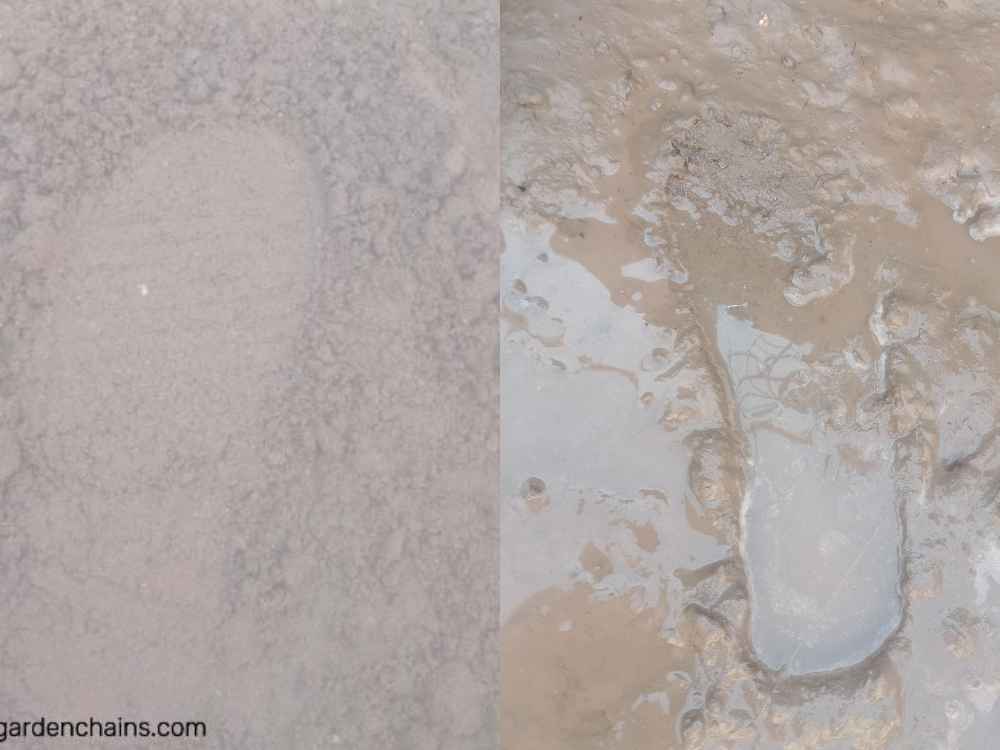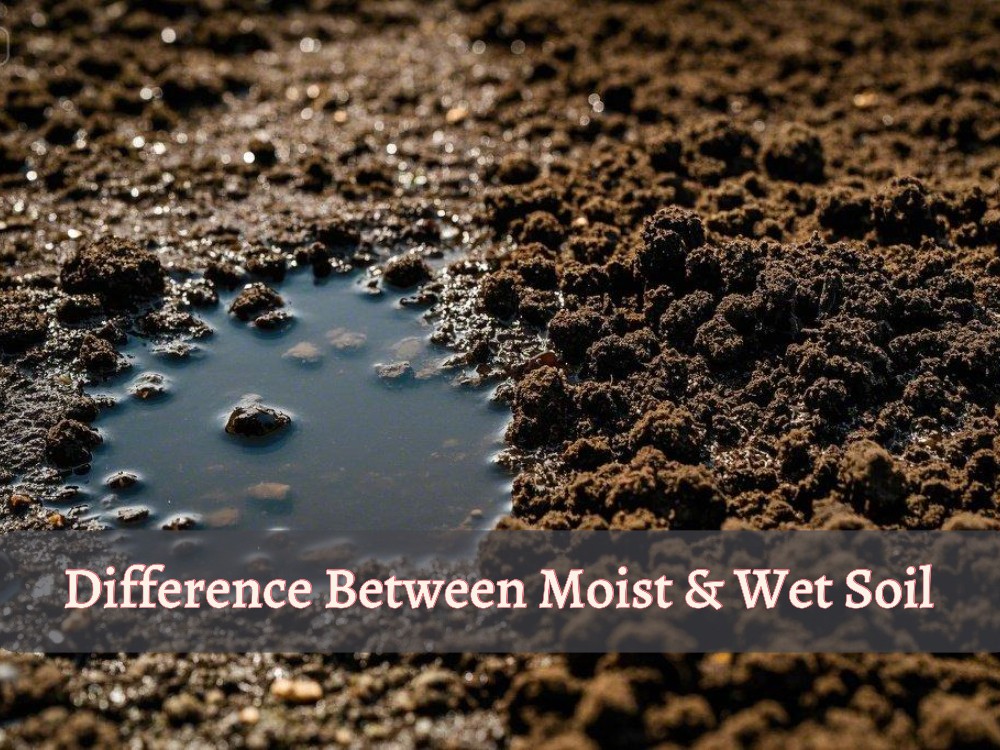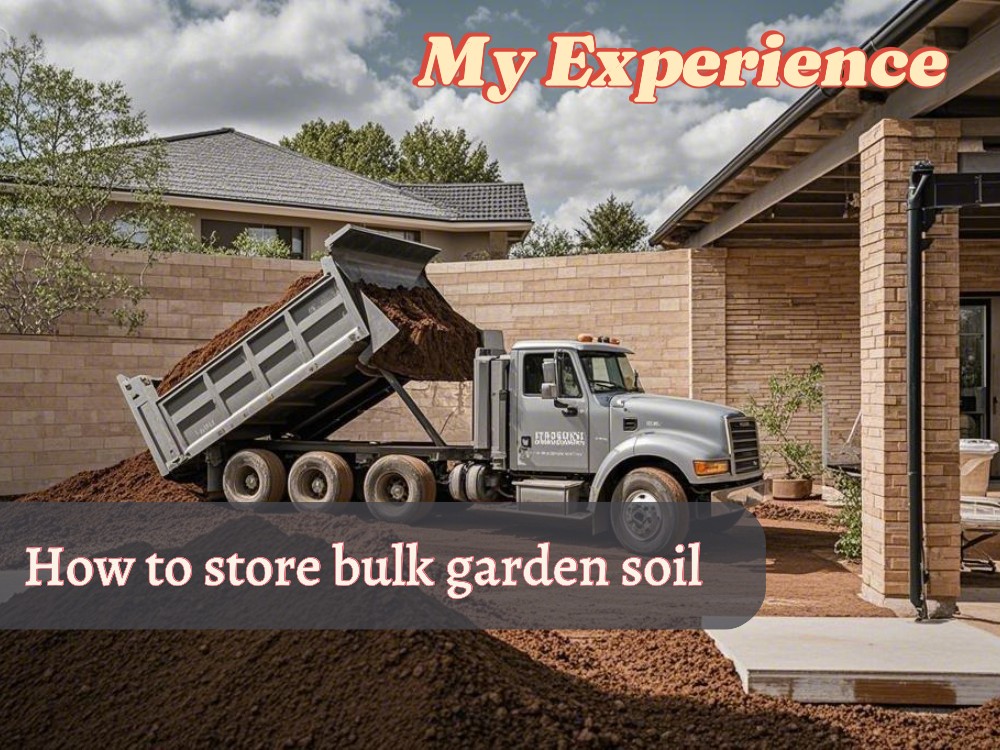When gardeners ask about watering plants, they mostly listen to everyone: Keep the soil moist but not wet! However, they are confused about the difference between wet and moist soil, especially if they are full beginner.
Sometimes, this question also makes us wonder why this difference is so important. What will happen if the soil becomes too wet, and what will be the effect on plants if the soil remains moist?
So, let’s solve this confusion about the difference between wet and moist soil to water plants in a suitable amount.
💡 Do You Know?
Seeds popping out of the soil can happen due to excessive moisture, compacted soil, or worm activity. If you notice your seeds not staying in place, it might be a sign of these soil conditions. Learn why this happens and how to fix it.
The Role of Soil Moisture in Gardening
The soil is the most fundamental element in environmental factors affecting plant growth effectively. Beyond the soil, other ecological factors also influence plant growth.
Regarding the soil, its moisture directly impacts plant growth and health.
Balanced soil moisture creates an ideal environment for absorbing water and nutrients according to plant type, while excessively wet (waterlogging) soil can damage plant roots, preventing oxygen flow from soil to roots.
Likey, too much dry soil means water deficiency that causes wilting, drooping, or browning of the leaves.
So, depending on the plant’s preference, keeping the soil moist (not too wet or not too dry) is a good practice to continue better plant growth.
And now you will say that again, the same info is to keep the soil moist but not wet or not dry.🤭
After all, what’s the difference between moist and wet soil. Dry soil is understandable, but why are moist and wet soil different?
Moist Soil

Moist soil has enough water! It feels fluffy instead of solid and does not drip water when you hold it in your hand.
We can describe moist soil as being neither too wet nor too dry but rather like a sponge dipped in a little water and squeezed it is not wet but feels light when touched.
How to Identify Moist soil?
Take the soil in your hand, it will be moist soil if;
- It feels cool and moist to the touch, and no water drips from it.
- The soil holds its shape for a while, and when you press in your fist, it crumbles as soon as you let go.
- You put your fingers in the soil; it feels soft and supple but does not seem to be submerged.
Wet Soil

Wet soil means fully soaked and saturated with water, leaving little to no space for air between its particles. Wet soil conditions make it hard to absorb more water and air (oxygen), leading to poor growth.
Wet soil usually occurs due to excessive watering after rain or in areas where proper drainage is not available.
You can understand it as water dripping from a saturated sponge or like muddy soil releasing water after rain.
How to Identify Wet Soil?
You can easily identify wet soil;
- Water drips from it when you hold it.
- Wet soil usually feels sticky and heavy.
- Sometimes, it releases a musty smell.
Pro Tip: If you walk on soil and water starts to stick to your shoes or the ground starts to sink, then the soil is wet.

Important Tip! Improper soil or mulch storage can attract termites. Use termite-resistant mulch and store soil correctly to avoid infestations.
What is the key Difference Between Moist and Wet Soil?
Let’s discover the real difference between moist and wet soil to understand this concept more effectively.
Wet soil means slightly damp soil (fluffy) but not waterlogged, while wet soil has absorbed too much water and starts dripping when pressed.
Proper oxygen supply is the most important thing for plant roots, which is only possible in moist soil (not too dry or not too wet).
On the other hand, roots can rot due to poor oxygen flow in wet soil. The following table shows details differences between moist and wet soil.
Moist Vs. Wet Soil
| Features | Moist Soil | Wet Soil |
| Water Content | Excessive, waterlogged | Adequate but not soggy |
| Drainage | Poor, water sits on top | Well-drained, absorbs water efficiently |
| Root Health | Can lead to root rot | Promotes healthy root growth |
| Oxygen Levels | Low, roots may suffocate | Balanced, allows oxygen circulation |
| Touch & Feel | Feels muddy, sticky, and heavy | Feels damp but crumbles easily |
| Plant Growth | May cause wilting or yellowing | Supports strong and steady growth |
How to Keep Soil Moist Instead Wet?
As you might have discussed, moist soil is better for plants than wet soil, so now let’s how to maintain it.
- Firstly, discover the signs that your plant needs water or not to determine the watering needs properly and prevent wet soil.
- Consider adding sand or perlite to the soil to drain out excess water.
- Use pots or garden beds with drainage holes to keep the proper drainage system and avoid water accumulation.
- Avoid overwatering, and always check the soil condition to determine hydration requirements.
- Try to grow drought-tolerant plants and ensure proper drainage of rainwater to maintain the natural balance of the earth.
Beyond improper soil moisture, explore here 10 hidden reasons behind poor plant growth!
💡Do you Know? If soil is not stored properly, it can either become too wet or completely dry. Proper storage of potting soil is important so that it retains moisture but is not wet. See here for how to preserve potting soil and DIY ways to store bulk garden soil.
Final Thoughts
Understanding the difference between moist and wet soil is like taking the first step in gardening, where everything seems new and tough. But as you experience it yourself, it becomes easier for you.
Most people understand the watering needs for plants, but “how much?”, is the question that comes into a beginner’s mind.
So, know that moist soil provides balance, where the roots get oxygen properly, while wet soil absorbs water too much and forces to plant roots to rot.




